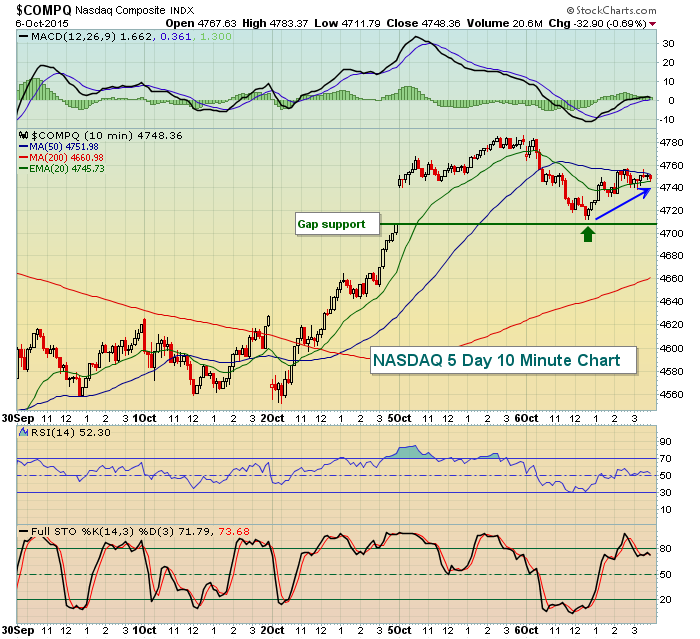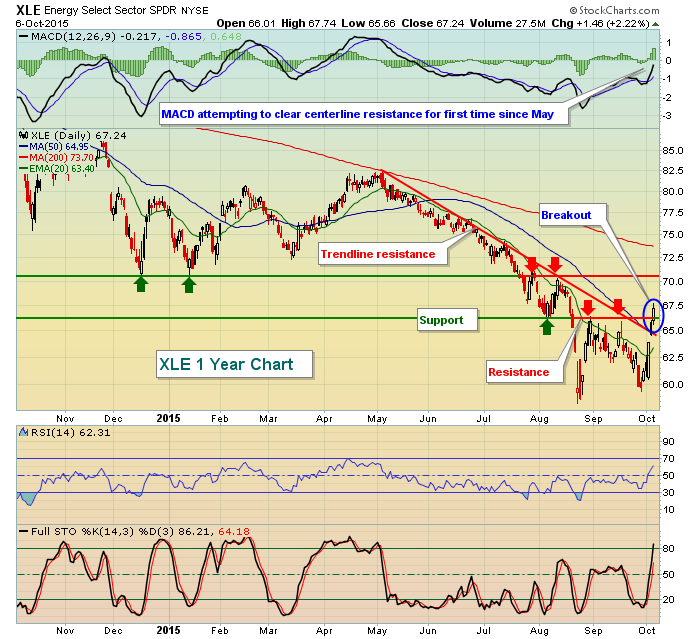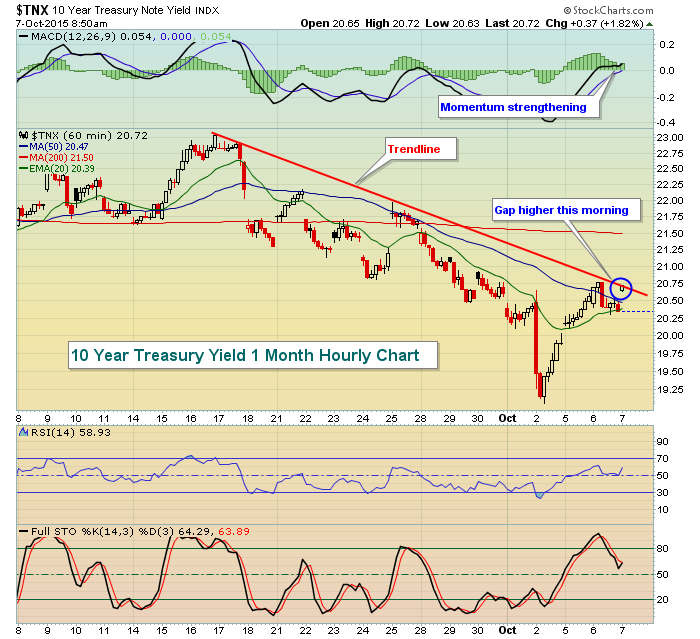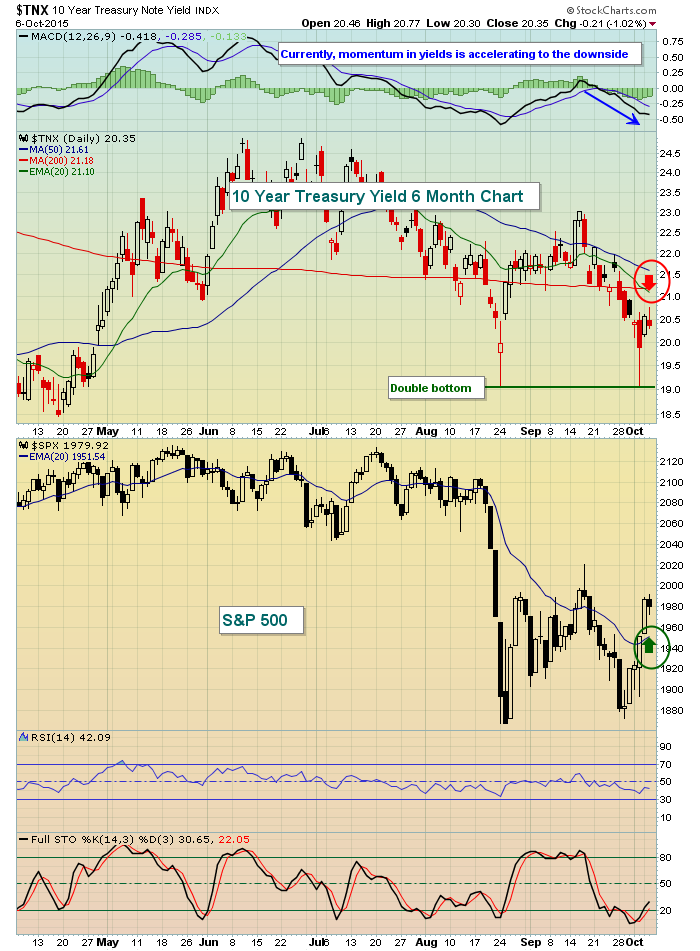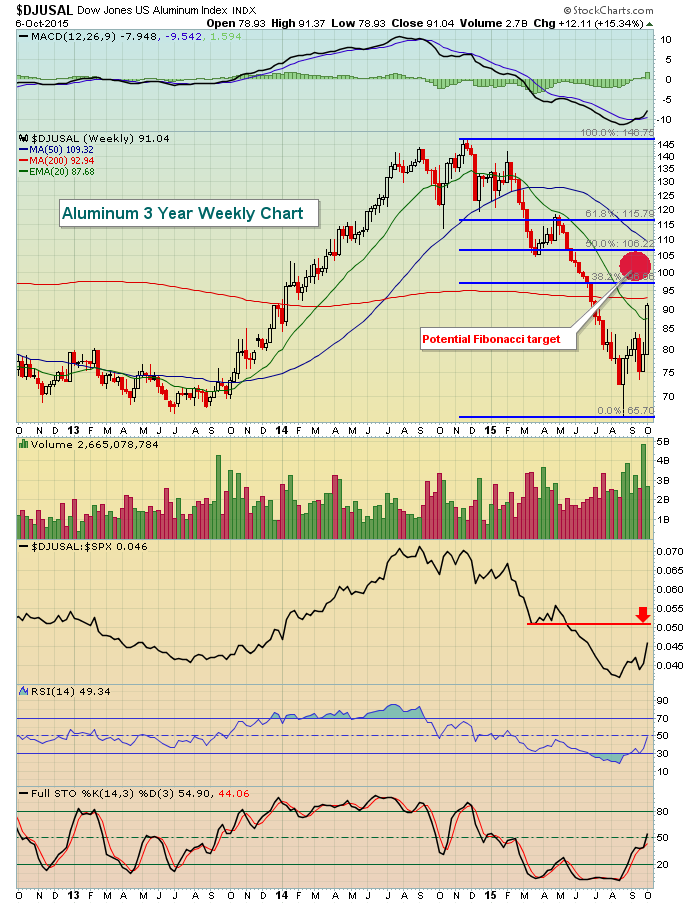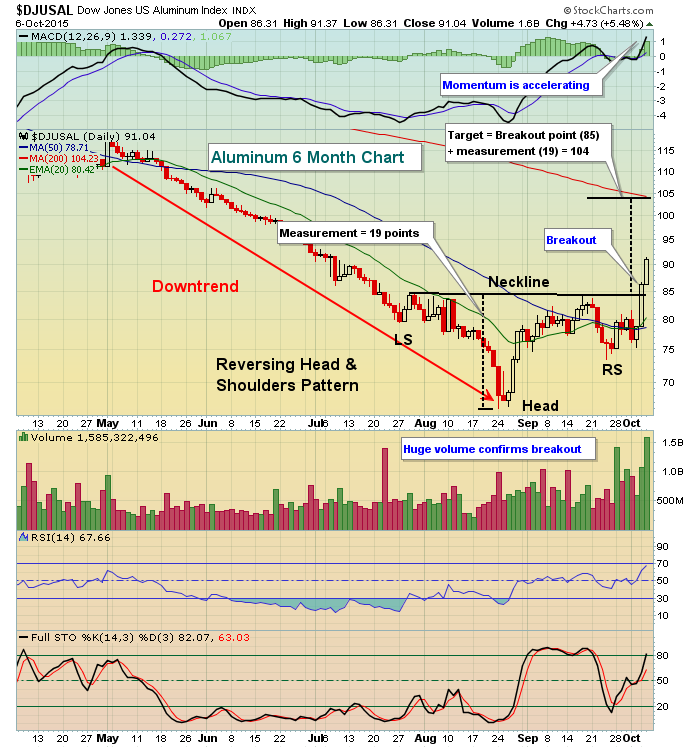Market Recap for Tuesday, October 6, 2015
No one could claim victory on Tuesday. First, we had a bifurcated market in which the Dow Jones rose while the S&P 500, NASDAQ and Russell 2000 all lost ground. Three sectors gained while the other six fell. Clearly, there was hesitation at resistance yesterday but we should expect that. The good news is that it appeared as if rising 20 day EMAs would be lost again. Instead, the afternoon session was mostly kind and both the NASDAQ and Russell 2000 managed to close above their respective 20 day EMAs. Furthermore, the early selling took the NASDAQ down within a few points of key gap support before the afternoon buying resumed. Here's the visual:
Energy and materials are playing catch up after months of lagging the other sectors. Energy was especially weak for the past year. After closing out September at 59.79, the XLE has soared to Tuesday's close of 67.24. In just four October trading days, the XLE has risen 12.5%. That's a solid YEAR, let alone four days. Here's an XLE chart reprint from yesterday, showing the initial break above price resistance:
Pre-Market Action
On the heels of solid action in Europe once again, U.S. futures are poised for a solid start. At last check, Dow futures were up close to 100 points as that blue chip index is set to extend gains after closing on Tuesday at its highest level since the August swoon. Also, another short-term positive sign is that the upside momentum in the 10 year treasury yield ($TNX) is building. Treasuries are selling this morning, resulting in a gap higher in the TNX to challenge trendline resistance established off the September 17th (FOMC announcement date) high. Failure to make the breakout, however, could mark an important short-term top in equities just as key resistance on the S&P 500 (2000 level) and NASDAQ (4800-4900 resistance zone) are tested. Needless to say, we are going to be witnessing a battle between those believing in the sustainability of the 6 1/2 year bull market and those believing a bear market has begun.
Take a look at the TNX chart:
Current Outlook
After months of watching the S&P 500 struggle primarily due to awful action in energy and materials, it's nice to see these two groups actually contribute to healthy market gains. I still view the four aggressive sectors - technology, industrials, financials and consumer discretionary - as holding the key to this bull market, however. They've performed well during this latest rally attempt, although financials have been hurt on a relative basis by the 10 year treasury yield ($TNX) hovering much closer to support than resistance. In fact, while I discuss the short-term bullish ramifications of our major indices remaining above their rising respective 20 day EMAs, the TNX remains well below its DECLINING 20 day EMA. If the bulls hope to continue this rally, I believe the TNX needs a nice spike to support it. As I pointed out above, the TNX is spiking higher in early trading today, but I'll be looking for that to be sustained. Check out the disparity in the TNX, compared to the S&P 500:
(Note: You can click on any of these charts to view my settings or to save the chart in a ChartList of your own)
You can see the disparity above. While the S&P 500 shows that its recent strength has resulted in a rising 20 day EMA that resides beneath current price (green arrow), the TNX shows much more negative action highlighted by the red arrow marking 20 day EMA resistance - and that 20 day EMA is falling. It's difficult to grow too optimistic about this rally at this point because too much money is rotating into the defensive treasuries.
Sector/Industry Watch
Don't look now, but aluminum ($DJUSAL) is on a roll. After falling more than 50% in less than a year, the tide has turned. The DJUSAL has risen approximately 40% in the past six weeks. How far might this go? Well, first look at the decline on the weekly chart prior to this recent advance:
After a steep decline, I'd look for either the 38.2% or 50.0% Fibonacci retracement areas as likely targets. In addition, the daily chart argues for a target in this area as well. Check this out:
Perhaps most interesting of all is the timing. Alcoa (AA) kicks off earnings season on Thursday after the closing bell and RARELY do we see a surge in aluminum prior to AA's earnings report. Apparently, the market is anticipating that AA will indicate the worst is behind them despite what's likely to be poor quarterly results.
Historical Tendencies
Stock market rallies prior to earnings season are nothing new. In fact, I did a study of price action on the S&P 500 from the 28th to the 18th of the calendar month PRIOR to earnings season. For instance, for the January earnings season, I looked at the history of price action from December 28th to January 18th. For April, I reviewed March 28th to April 18th...and so on. Keep in mind that the S&P 500 enjoys a 9% average annual return since 1950 throughout the year. As I started my study, I wanted to see if annualized returns for those 4 periods (28th through 18th) outperformed the balance of the year. The answer? The S&P 500 has an annualized return during those periods of 17.15% over 65 years - or nearly double the 9% that the S&P 500 rises on average throughout the year. So if you believe there's an upward bias to the stock market as earnings season approaches, you are correct.
Key Earnings Reports
MON: (.19) (actual) vs. .00 (estimate)
STZ: 1.56 (actual) vs. 1.31 (estimate)
Key Economic Reports
None
Happy trading!
Tom

